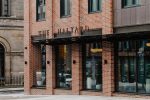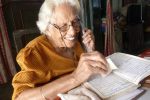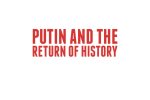Breaking the News edited by Jackie Harrison & Luke McKernan – Review
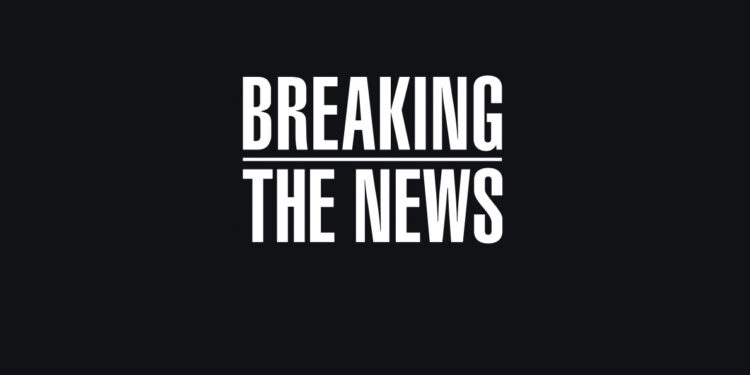
By Clare Jenkins
Ten years ago, working as a university lecturer, I set up a 12-week module called The History of Journalism, to introduce Journalism undergraduates to the great names and campaigns of their chosen profession. Many had never heard of the legendary Sir Harold (Harry) Evans or of W. T. Stead, who exposed child prostitution in Victorian London in the pages of his Pall Mall Gazette. As a result of his undercover work, the age of consent for girls was raised from 13 to 16.
Until we discussed them, many of the students were also unaware of the Sunday Times’s 1970s Thalidomide campaign, the Daily Telegraph’s damaging exposé of MPs’ expenses (£1,400 for a floating duck house?), or the murders of journalists such as Jamal Khashoggi, Russia’s Anna Politkovskaya, America’s James Foley, Ireland’s Veronica Guerin.
But they soon became interested – as they did when we talked about photojournalism and Picture Post, about Cosmopolitan’s brief excursion into male nude centrefolds, and about the history of the agony aunt. They were gripped by the Profumo scandal, by scoops like James (later Jan) Morris’s Times report on the conquest of Everest, and by her subsequent gender realignment. And they were both shocked and amused by the infamous 1970s Oz trials – when the hippy trio in charge of the underground magazine gave a group of schoolkids free rein to be as rude as they liked about Rupert Bear and ended up in jail as a result.
Plenty of students probably still know little about journalism beyond sports reporting and high-profile figures like Piers Morgan, Susannah Reid or the latest You Tuber. In which case, they need to be taken sharpish to the British Library’s new Breaking the News exhibition (on until August) and made to read the accompanying book.
“Sensationalism is a centuries-old editorial tactic”
Breaking the News: 500 Years of News in Britain is a joint British Library/ University of Sheffield venture. Edited by the university’s Prof Jackie Harrison and Luke McKernan of the BL, it’s an invaluable collection of eminently readable essays covering what makes news, the meaning of a free press, suppression and partisanship, journalistic ethics (yes, there really is such a thing) and objectivity. Its accessibility makes it that rare thing – a textbook with huge appeal to general readers. Its arguments demonstrate the ongoing importance, relevance and complexities of news journalism. And by including historical examples as well as contemporary ones, it shows that there’s nothing new (or news) under the sun.
The first section looks at the definition and interpretation of news from the Battle of Flodden Field in 1513 through the crimes of Jack the Ripper to coverage of COVID-19. War reporters such as William Howard Russell and Marie Colvin are here, the former covering the Crimean War in the 1850s, the latter killed by Syrian government forces while covering the siege of Homs in 2012.
War reporting has always been news – as currently evidenced day after day, night after night, in Ukraine. But is Boris Johnson’s Partygate ‘news’? Are Angela Rayner’s legs? Trainee reporters used to be told that news was the thing you shouted across the street to a neighbour after a house fire or burglary. But it’s actually a lot more slippery than that. In her chapter on sensationalism, the BL’s Maddy Smith asks: “Who can resist a sensational news story about a juicy sex scandal or a gory murder? Nobody can, and that’s the point. Sensationalism is a centuries-old editorial tactic in which particular types of news stories are selected and reported in such a way as to excite the greatest number of readers.”
This echoes W. T. Stead’s words 100 years earlier of the infamous Whitechapel murders: “What is the right thing to do? …The paying thing is to go in for sensation, to bring out a sheet which drips with gore and is almost as ‘creepy’ and revolting as the gashed and mangled corpse of the murderer’s victim. To work up the sensation by every means known to journalism… that is the plain path set before the journal by considerations of profit and loss.”
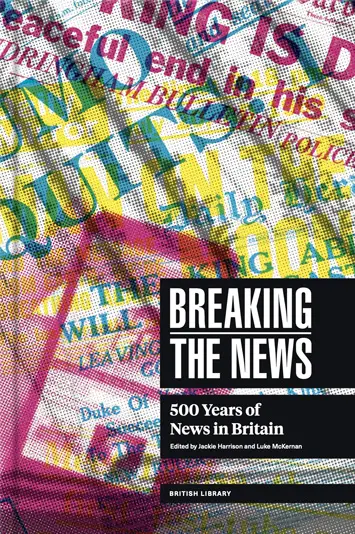 Those same considerations are still with us, of course – hence the reliance on ‘click-bait’, notoriously seen in the Mail Online’s ‘sidebar of shame’.
Those same considerations are still with us, of course – hence the reliance on ‘click-bait’, notoriously seen in the Mail Online’s ‘sidebar of shame’.
“Caught in the glare”
Examining the appeal of scandal (to those not caught up in it), journalist-turned-academic George Brock notes: “Start with shock. Scandals begin with a detonation: something explodes. In old Fleet Street slang, a ‘marmalade-dropper’ must be astonishing enough to make the reader drop something at breakfast.”
So anything to do with sex is a shocker – Oscar Wilde, ‘Paddy Pantsdown’, John Profumo, Matt Hancock. As Brock concludes “Human beings in positions of power and influence will take risks and make mistakes, and some will fall. We will continue to devour the details.” Let s/he who has not sinned thrown the first stone.
It’s all here in these thoroughly researched, clearly analysed 200 pages: celebrity news, coverage of tragedy and its aftermath, the political impact of cartoons (a fascinating chapter by Sheffield-based cartoonist-academic James Whitworth), the role of the Press in public information campaigns, Matthew Parris on the fall of Margaret Thatcher, Edward Snowden’s leaks about global surveillance by the American National Security Agency, the phone hacking scandal, which resulted in the closure of The News of the World and the Leveson Inquiry into the practices and ethics of the British Press.
Throughout, it examines the very real difficulties and moral and practical dilemmas faced by journalists – not just those reporting from conflict zones or intimidated by powerful forces, but also those who cover everyday stories that still entail issues of balance, responsibility, sensitivity, trust. People don’t ask to become the subject of stories involving crime, disaster, tragedy. But when those things happen, people’s lives can become public, their responses caught in the glare of a photographer’s flash.
As Joad Raymond writes of the 1966 Aberfan tragedy: “The journalist (and photographer) is expected to show empathy, to present to an anonymous public circumstances that the subjects (or ‘victims’, to use a very loaded word) might prefer to be private; and to represent to the reader a story that can clearly be understood.”
It’s little wonder journalists don’t always get it right – and some get it very wrong.
Kurt Barling (former BBC investigative journalist, now Professor of Journalism at Middlesex University) looks at the role of photographers in getting the world to sit up and take notice – whether it’s Alan Kurdi’s picture of a drowned child on an Aegean beach after his family fled from Syria, or Kevin Carter’s Pulitzer Prize-winning 1993 image of a starving Sudanese child stalked by a vulture. Such images really can make a difference, though at the time, the latter photograph was denounced as “exploitative, sensational and voyeuristic”, and sparked a debate about whether a journalist or photographer should stand by or intervene. It’s easy to condemn when you’re not there. In fact, Carter scared the bird away and the child survived – but for how long? Some time later, Carter took his own life, haunted by all the tragedy he had seen. Closer to home, one newspaper photographer I knew went to cover a routine football match at Hillsborough one April day in 1989, only to find himself photographing people dying behind fences. His instinct to keep snapping kicked in. It was only afterwards that he realised what he’d been seeing, and had a breakdown. Not all journalists/ photographers are paparazzi or purveyors of ‘fake news’.
“Seeking alternative views”
Jackie Harrison opens the section on objectivity by pointing out that the charge of a ‘lying press’ goes back to the mid-19th Century. Donald Trump made it into a rallying cry, tweeting ‘FAKE NEWS!’ every time a journalist reported something at odds with his own world view.
Since the rise of social media, of course, there is so much fake news about, so many doctored photos and videos, so much gullibility, collusion and echo-chamber need, that it gets harder and harder to tell the fact-checked truth from ’alternative facts’. That Orwellian phrase came from Trump’s then aide Kellyanne Conway, after her boss claimed that his 2017 Presidential inauguration ceremony saw the largest turn-out ever – a statement not supported by photographic evidence. “Looking back across the four years of Trump’s presidency,” writes Kurt Barling, “this can be seen as the start of a shift towards public officials actively sowing seeds of doubt in the minds of citizens that news-makers and their stories lacked veracity, and that news-makers were not trustworthy.”
The trouble is, once you go down that rabbit hole, you end up in a den of “propaganda, delusion and even conspiracy theories”.
Luke McKernan agrees: “Twitter has changed the nature of news itself, by changing the news story and its relationship with truth”. Professor Jo Fox, an expert on propaganda, adds: “The COVID-19 pandemic has shone a harsh light on the damaging effects of mis- and disinformation, and understandably demand has increased for reliable and accurate news.”
In an era when news organisations have drastically cut back resources and jobs, the journalist’s duty to present reliable and accurate news has become ever more difficult. But most still respond as best they can, seeking alternative views where necessary, digging, fact-checking, using trusted sources, abiding by strict codes of conduct. Where are the codes of conduct in social media –especially now that Elon Musk has taken over Twitter and vowed to support ‘free speech’? One person’s free speech is, as we all know, another person’s hateful rhetoric. Some Twitterati are what were once known to hacks as ‘green inkers’ – anonymous writers of venomous letters to newspapers, using green ink. If you saw green ink on an envelope, you chucked the letter in the bin. If only life was that simple now.
‘Breaking the News: 500 Years of News in Britain’, edited by Jackie Harrison & Luke McKernan is published by The British Library, £25 hardback

